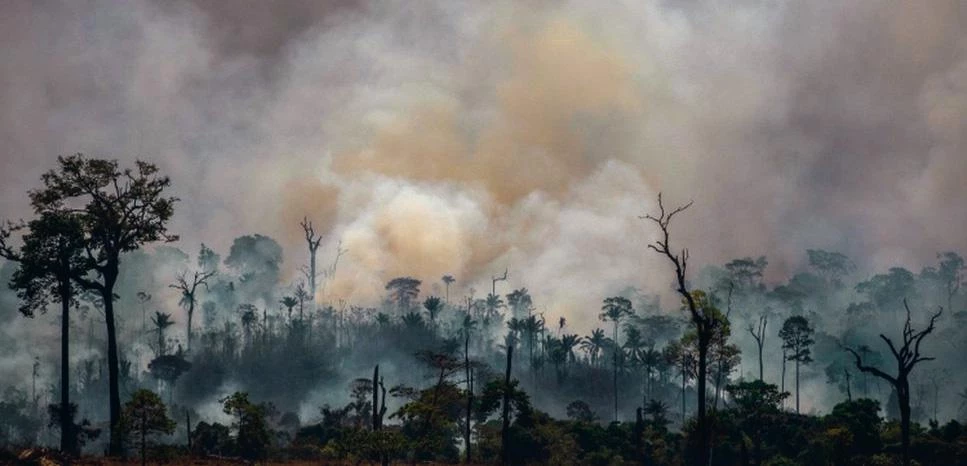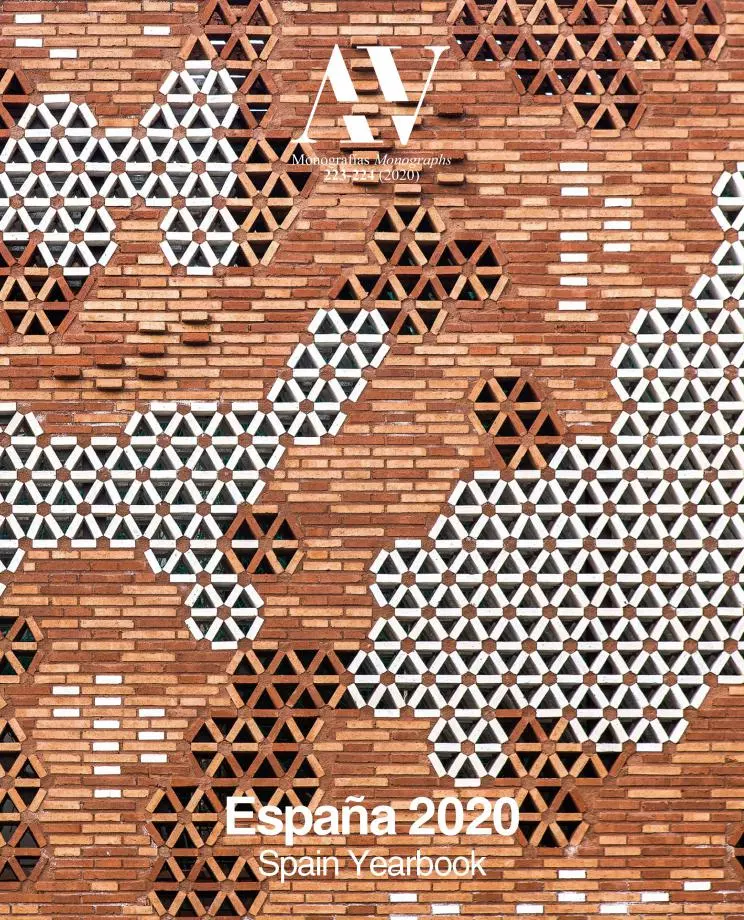
We are at the threshold of something, but do not know what exactly. Ortega y Gasset’s diagnosis – “We do not know what is happening to us, and this is precisely what is happening to us” – also applies to the current moment of transition between decades, as full of uncertainty in a world devoid of leadership as in a Spain fractured by ideological and territorial conflicts. AV was born 35 years ago to take stock of architecture and its context, and in this role of global observer the ‘Yearbooks’ have been indispensable. If we look at the immediate past, the titles of the introductory essays in the last five years sum up the narrative: after announcing ‘the coming gale’ and confirming a ‘change of climate,’ we deplored ‘the rise of populism’ and described the new ‘territories of risk,’ to end up witnessing ‘the multitude in motion,’ which called the established order into question through protests. Francis Fukuyama has written in Identity that ‘sometime in the middle of the second decade of the twenty-first century, world politics changed dramatically,’ and we may still be trying to define the profiles of that mutation, and straining our eyes to more clearly distinguish the future waiting at our threshold.
In the course of the year we have tried to discern the future lying in ambush in the present, and to capture it through the introductory essays of Arquitectura Viva, which could be summarized in this decalogue:
1. The invisible will demand visibility and respect, identitarian politics will make headway, and populism will spread its influence.
2. The space race will resume, and the Moon or Mars will claim resources that would be better used to tackle our planet’s challenges.
3. We will face the climate emergency by transitioning to new energy sources and adapting to the irreversible change.
4. Robotization and AI will render many skills obsolete, transforming jobs and altering our perception of what is human.
5. After war refugees, the devastation of fields by droughts and the resulting famines will multiply the number of economic migrants.
6. Mass tourism will continue to degrade the natural environment as well the heritage and social structure of historical cities.
7. We will learn to appreciate the imperfect beauty of objects that have withstood the wear and tear of time, perishable like ourselves.
8. Cities will keep growing because they are healthier and safer, and because density is more sustainable than sprawl.
9. The pollution of oceans by plastics and other wastes forces us to reexamine our industrial methods and personal habits.
10. Trade and cyber wars aside, the biggest danger for Spaceship Earth’s passengers is still the geopolitical race for nuclear weapons.
I do not know if this list helps to chart the future or blur it altogether, but the start of a decade seems a good time to imagine it, even if the whirl of life proves us wrong. Accuracy exists, for sure, in the chronicle of the year, during which the world saw the climate emergency drawing attention to the devastating fires in the Brazilian Amazon region or in Australia and the citizen uprisings everywhere from Chile to Hong Kong, and Spain went through a chain of elections and procés trials. In culture, the Prado Museum’s second centenary and the Bauhaus’s first were celebrated with numerous exhibitions, while the worst news was the burning of Nôtre Dame cathedral; and in architecture, the year’s images were the mediatic works by Diller Scofidio + Renfro and Thomas Heatherwick in Manhattan’s Hudson Yards – The Shed and Vessel – and the colossal ones by Zaha Hadid Architects in Beijing, the city’s second international airport and a skyscraper formed by two intertwined towers; the studio of the late Iraqi-British architect also completed a stadium in Qatar, which now accompanies Jean Nouvel’s lyrical National Museum, evoking a desert rose, and, also in the Gulf, Valerio Olgiati’s Pearling Path Interpretation Center in Bahrain.
China, in turn, was in the news thanks to two competitions in Shanghai: for the Grand Opera House, won by Snøhetta, and for the Alibaba headquarters, where Norman Foster triumphed with a scheme inspired by Sol LeWitt; an international presence amid the vigor of its own architecture, where practices like those of Wang Shu or the younger Gong Dong (Vector) and Neri & Hu are producing admirable works. Turkey opened a museum by Kengo Kuma, with a characteristic facade of stacked timber pieces; and Europe inaugurated BIG’s The Twist museum and Snøhetta’s underwater restaurant, both in Norway, or Barozzi & Veiga’s Cantonal Museum of Fine Arts in Lausanne, while Olafur Eliasson showcased his trajectory at Tate Modern and Porto paid tribute to Álvaro Siza and Eduardo Souto de Moura through exhibitions at the Serralves Museum and the Casa da Arquitectura, respectively.
In Spain, the northern coast garnered major headlines: the reopening, after several years of closure, of Chillida Leku sculpture park near San Sebastián; Foster’s victory in the bid to enlarge Bilbao’s Fine Arts Museum; and David Chipperfield’s in the contest to fit out the historic Banco de Santander headquarters in Cantabria for cultural uses. Another important competition, for the construction in Madrid of a huge medical campus, the new La Paz hospital complex, was won by a group of offices headed by Burgos & Garrido, and the one organized in Vigo for a building that would consolidate the Galician city’s ties to the automobile industry, by Vaillo + Irigaray. Meanwhile, the young Catalan architecture so well represented by Harquitectes continued to consolidate a school of great talent and rigor; Antón García-Abril and his Ensamble Studio expanded activity from Boston and Madrid to Menorca with Ca’n Terra, a visionary work in a quarry of the island; and Selgas Cano completed in Los Angeles a new Second Home center, a cellular and organic coworking facility that constitutes a further step in the internationalization of the Madrid practice.
The year’s accolades highlighted long-standing careers with the Pritzker of Arata Isozaki, the AIA Gold Medal of Richard Rogers, or the Soane of Kenneth Frampton, and here, Spain’s National Architecture Award for Álvaro Siza or the medal of the Spanish Association of Architecture Institutes (CSCAE) for Alberto Campo Baeza; but also more spare trajectories, such as that of Williams and Tsien with the Praemium Imperiale or Grafton Architects with the RIBA Gold Medal, and more specifically social works, with the Stirling for a residential development by Mikhail Riches and Cathy Hawley in Norwich and the Mies for another such project by Lacaton & Vassal in Bordeaux. Also social in their purpose were the six winners of the Aga Khan or the two works honored in the 11th BIAU: the SESC 24 de Maio in São Paulo, crowned with a public swimming pool on the roof terrace, designed by the revered Paulo Mendes da Rocha, and the Climate Museum in Lleida by Toni Gironés; meanwhile, Alfredo Payá received the FAD for his Instituto Playa Flamenca in Orihuela.
These summaries of the year are never without a sad colophon on those who have gone, and this time we lament the passing of eminent American architects like I.M. Pei, César Pelli, Kevin Roche, and Stanley Tigerman (although we should perhaps remember the Chinese, Argentinian, and Irish origins of the first three); of figures of European experimentalism like the Italians Alessandro Mendini or Cristiano Toraldo di Francia, founder of Superstudio; historians and critics like Charles Jencks, Franz Schulze, Graziano Gasparini, or Manuel Graça Dias, some of whom practiced as architects too; the unclassifiable Florence Knoll Bassett, architect and furniture designer who changed the conception of offices; and the Spaniards Juan Antonio García Solera, Carlos Hernández Pezzi, and Andrés Fernández-Albalat, mourned in Alicante, Málaga, and A Coruña.





